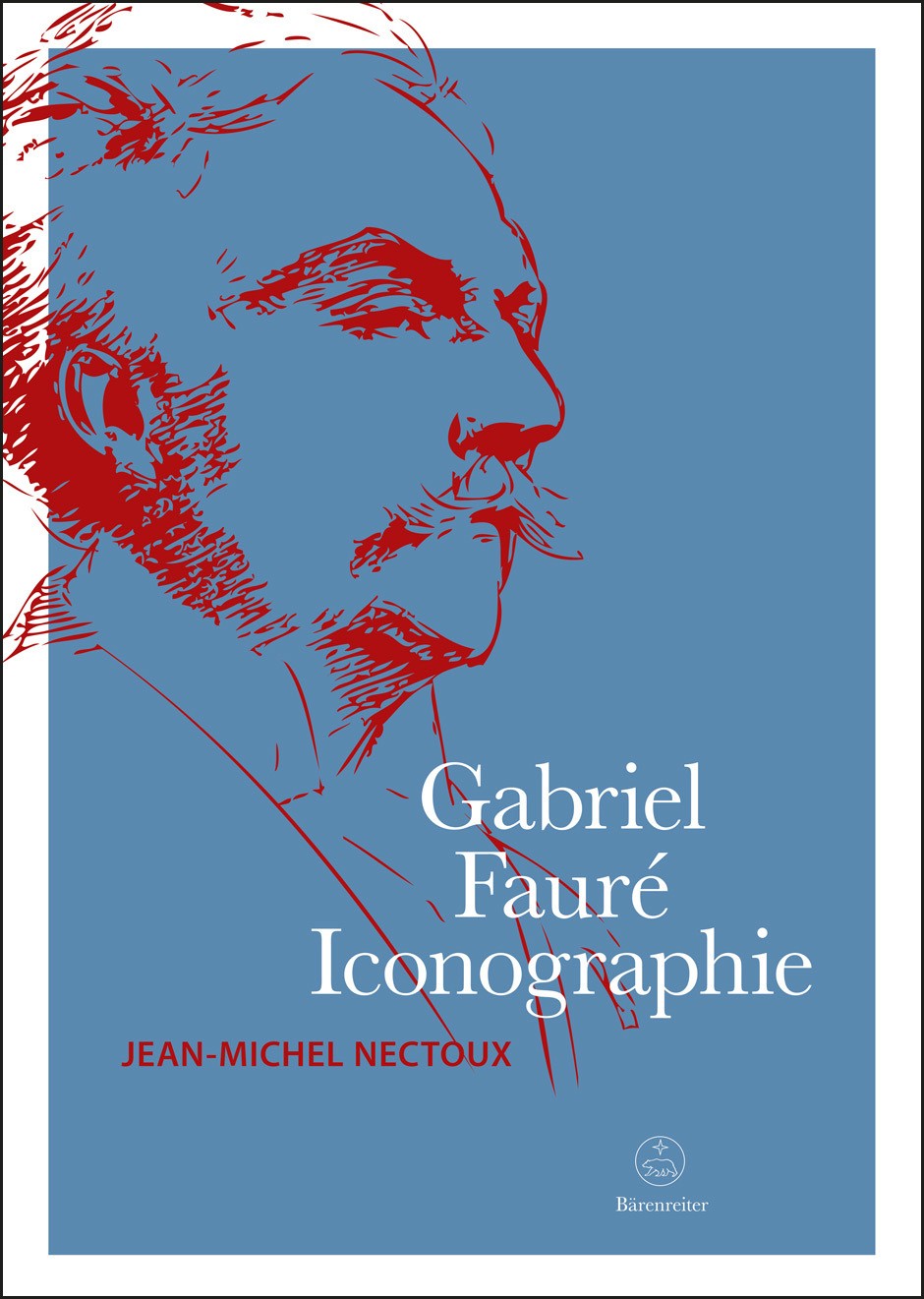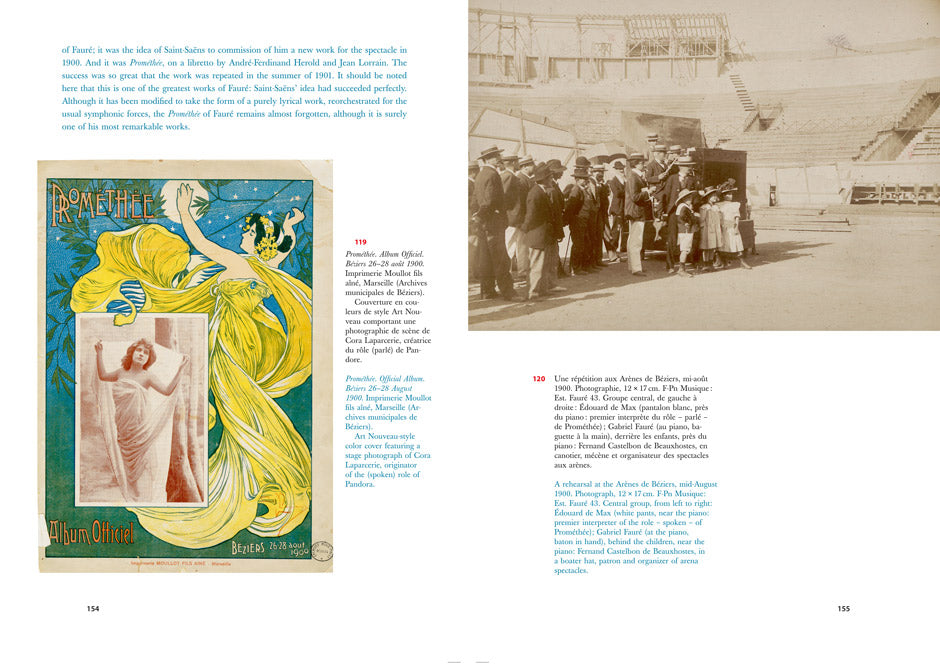Gabriel Fauré Iconographie
Œuvres complètes VII/2
Expected to ship in about a week.
- Author: Jean-Michel Nectoux
- Binding: Hardcover
- ISBN:
- Size: 7.9 x 10.9 inches
- Pages: 235
By means of pictures and photos this volume illuminates various aspects of Gabriel Fauré's personality (1845–1924): the man among relatives and friends, the musician with colleagues and in the context of the time and the places where he worked.
Fauré was an attractive man with a distinct charm and strong appeal. His physiognomy inspired many painters such as Eugène Baugnies, Paul Mathey, Antonio Argnani, Théo Van Rysselberghe, Ernest Laurent and Jacques-Émile Blanche; the most famous is certainly the oil painting by his British friend John Singer Sargent. The number of photographs in which Fauré is depicted is also enormous due to the public positions he held: Initially an organist at the Madeleine, he became a composition teacher at the Paris Conservatoire, then director of this institution and finally a member of the Institut de France.
In addition, the iconography contains a selection of documents: manuscripts, posters, costumes, production photos of his stage works as well as illustrated covers of original editions. and lastly, photos taken by Fauré himself are also included.
Collected, edited and annotated by Jean-Michel Nectoux, who has made Fauré the focus of his research work over a period of more than 50 years, this illustrated volume is a treasure trove for anyone fascinated by French music of the time. The volume is published as a supplement to the Complete Critical Edition of Fauré's Works.
Contents:
- Introduction
- Einleitung
- Kapitel 1: Prémisses / Premises
- Kapitel 2: Portraits de famille / Family portraits
- Kapitel 3: Musicien d'église / Church musician
- Kapitel 4: Tout un monde proustien / A Proustian world
- Kapitel 5: Musique et société / Music and society
- Kapitel 6: Le musicien et ses interprètes / The musician and his interpreters
- Kapitel 7: Portraits de l'artiste en musicien / Portraits of the artist as a musician
- Kapitel 8: En scène / On stage
- Caligula (1888)
- Shylock (1889)
- Pelléas et Mélisande (1898)
- Prométhée (1900)
- Pénélope
- Kapitel 9: L'homme public / The public man
- Kapitel 10: Interlude: Portrait de l'artiste en photographe / Portrait of the artist as a photographer
- Kapitel 11: Ultima Verba
- Annexe / Appendix
- Remerciements / Acknowledgements
- Index des œuvres de Fauré / Index of Fauré's works
- Index des noms / Index of names
Publishers use a lot of words to describe what they sell, and we know it can be confusing. We've tried to be as clear as possible to make sure you get exactly what you are looking for. Below are descriptions of the terms that we use to describe the various formats that music often comes in.
Choral Score
A score for vocalists that only contains the vocal lines. The instrumental parts are not there for reference. Generally, cheaper than a vocal score and requires multiple copies for purchase.
Facsimile
Reproductions of the original hand-written scores from the composer.
Full Score
For ensemble music, this indicates that the edition contains all parts on a single system (there are not separate parts for each player). In larger ensembles, this is for the conductor.
Hardcover
Hardbound. Generally either linen-covered or half-leather.
Orchestral Parts
Similar to a wind set, this is a collection of parts. In the case of strings, the numbers listed are the number of copies included, though generally these are available individually (often with minimum quantities required).
Paperback
When publishers offer multiple bindings (e.g. hardcover) or study scores, this is the "standard" version. If you're planning to play the music, this is probably what you want.
Performance / Playing Score
A score of the music containing all parts on one system, intended for players to share. There are not separate parts for each player.
Set of Parts
For ensemble music, this indicates that there are separate individual parts for each player.
Solo Part with Piano Reduction
For solo pieces with orchestra, this is a version that contains a piano reduction of the orchestra parts. For piano pieces, two copies are typically needed for performance.
Study Score
A small (think choral size) copy of the complete score meant for studying, and not playing. They make great add-ons when learning concertos and small chamber works.
Vocal Score
A score prepared for vocalists that includes the piano/organ part or a reduction of the instrumental parts.
Wind Set
For orchestral music, this is a collection of wind and percussion parts. The specific quantities of each instrument are notated.
With Audio
In addition to the printed music, the edition contains recordings of the pieces. This may be an included CD, or access to files on the internet.
With / Without Fingering (Markings)
Some publishers prepare two copies - a pure Urtext edition that includes no fingering (or bowing) suggestions and a lightly edited version that includes a minimal number of editorial markings.




